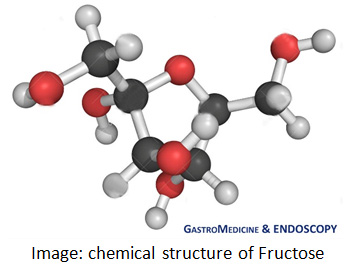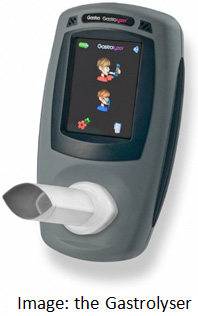Fructose Mal-absorption
WHAT IS FRUCTOSE?

One of the components of fruit that can cause these symptoms is a natural fruit sugar called fructose. Over the last few decades, fructose intake – in fruits, juice, and high fructose syrup – has increased in the Western diet to the point where the amounts commonly consumed in a day may cause mild gastrointestinal distress in normal people and severe symptoms in sensitive people. These days, such symptoms are frequently diagnosed medically as fructose mal-absorption. Fructose is a monosacharide (or a single sugar – see above). It has the same chemical formula as glucose (C6H12O6), but different molecular structure. They both have about the same caloric value, but fructose is sweeter. Fructose is not an essential nutrient for a human, meaning everyone can live without fructose, so ‘fructose deficiency’ does not exist. Fructose naturally appears in fruits, some vegetables, wheat, honey, sugar cane, sugar beets and some other plants. In commercial foods and drinks, fructose can be naturally present, or is added as a sweetener, like sucrose (table sugar containing 50% fructose, 50% glucose), or as a high fructose corn syrup (HFCS), somewhere called fructose-glucose syrup.
Fructose Mal-Absorptioon
Fructose Mal-Absorption Testing
IS THERE A TEST FOR FRUCTOSE MAL-ABSORPTION?Yes. Testing for fructose malabsorption is now widely available, and is simple.

The test uses a machine called Gastrolyser to detect a small rise in a gas (either Hydrogen or Methane) in your breath, after ingestion of pre-mixed amount of fructose. You will be given specific instruction to blow into the machine via the mouth-piece. The rise in the gases indicate there is unabsorbed fructose in the large intestine.
HOW LONG DOES BREATH TESTING TAKE?
Usually, it will take 3 hours to complete the test. Our staff will give you instructions during the testing period if you can leave before the three hours or occasionally, some patients will need to stay an extra 30 minutes.
WILL I BE SEDATED?
No. You will not be given a sedation, thus you can drive home after the test.
CAN I CONTINUE TO BREAST FEED?
Yes. Fructose is a naturally occurring sugar, and after being absorbed it is converted into a harmless sugar.
IF MY BREATH TEST IS POSITIVE, WHAT DO I DO?
If your test is positive, you are advised to see your doctor, a dietitian or one of our Gastroenterologists for further advice. On the day of your test, our staff will give you some information to get you started before seeing a doctor or dietitian. There is lots of information on the internet, but you will need to be careful as you can get overwhelmed and confused. Management of fructose mal-absorption should not be stressful.
IF I AM INTERESTED IN BREATH TESTING, WHAT DO I DO?
You can call our office Rosebud Endoscopy , and one of our reception staff will make an appointment for you, and post out an instruction sheet.
